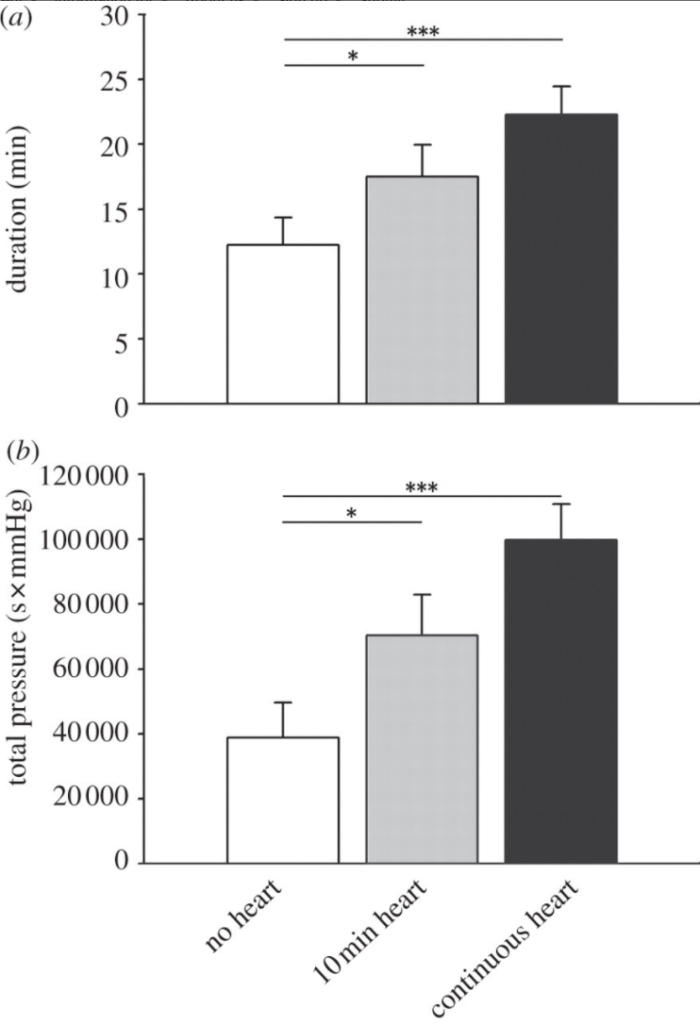
For January I decided to blog a paper I heard about on the excellent Nature podcast about a deliciously simple and elegant experiment to test a very simple question: given how much time and effort boa constrictors (like the one on above, photo taken by Paul Whitten) need to kill prey by squeezing them to death, how do they know when to stop squeezing?
Hypothesizing that boa constrictors could sense the heartbeat of their prey, some enterprising researchers from Dickinson College decided to test the hypothesis by fitting dead rats with bulbs connected to water pumps (so that the researchers could simulate a heartbeat) and tracking how long and hard the boas would squeeze for:
- rats without a “heartbeat” (white)
- rats with a “heartbeat” for 10 min (gray)
- rats with a continuous “heartbeat” (black)

The results are shown in figure 2 (to the right). The different color bars show the different experimental groups (white: no heartbeat, gray: heartbeat for 10 min before stopping, and black: continuous heartbeat). Figure 2a (on top) shows how long the boas squeezed for whereas Figure 2b (on bottom) shows the total “effort” exerted by the boas. As obvious from the chart, the longer the simulated heartbeat went, the longer and harder the boas would squeeze.
Conclusion? I’ll let the paper speak for itself: “snakes use the heartbeat in their prey as a cue to modulate constriction effort and to decide when to release their prey.”
Interestingly, the paper goes a step further for those of us who aren’t ecology experts and notes that being attentive to heartbeat would probably be pretty irrelevant in the wild for small mammals (which, ironically, includes rats) and birds which die pretty quickly after being constricted. Where this type of attentiveness to heartrate is useful is in reptilian prey (crocodiles, lizards, other snakes, etc) which can survive with reduced oxygen for longer. From that observation, the researchers thus concluded that listening for heartrate probably evolved early in evolutionary history at a time when the main prey for snakes were other reptiles and not mammals and birds.
In terms of where I’d go next after this – my main point of curiosity is on whether or not boa constrictors are listening/feeling for any other signs of life (i.e. movement or breathing). Obviously, they’re sensitive to heart rate, but if an animal with simulated breathing or movement – would that change their constricting activity as well? After all, I’m sure the creative guys that made an artificial water-pump-heart can find ways to build an artificial diaphragm and limb muscles… right?
Paper: Boback et al., “Snake modulates constriction in response to prey’s heartbeat.” Biol Letters. 19 Dec 2011. doi: 10.1098/rsbl.2011.1105

Leave a Reply